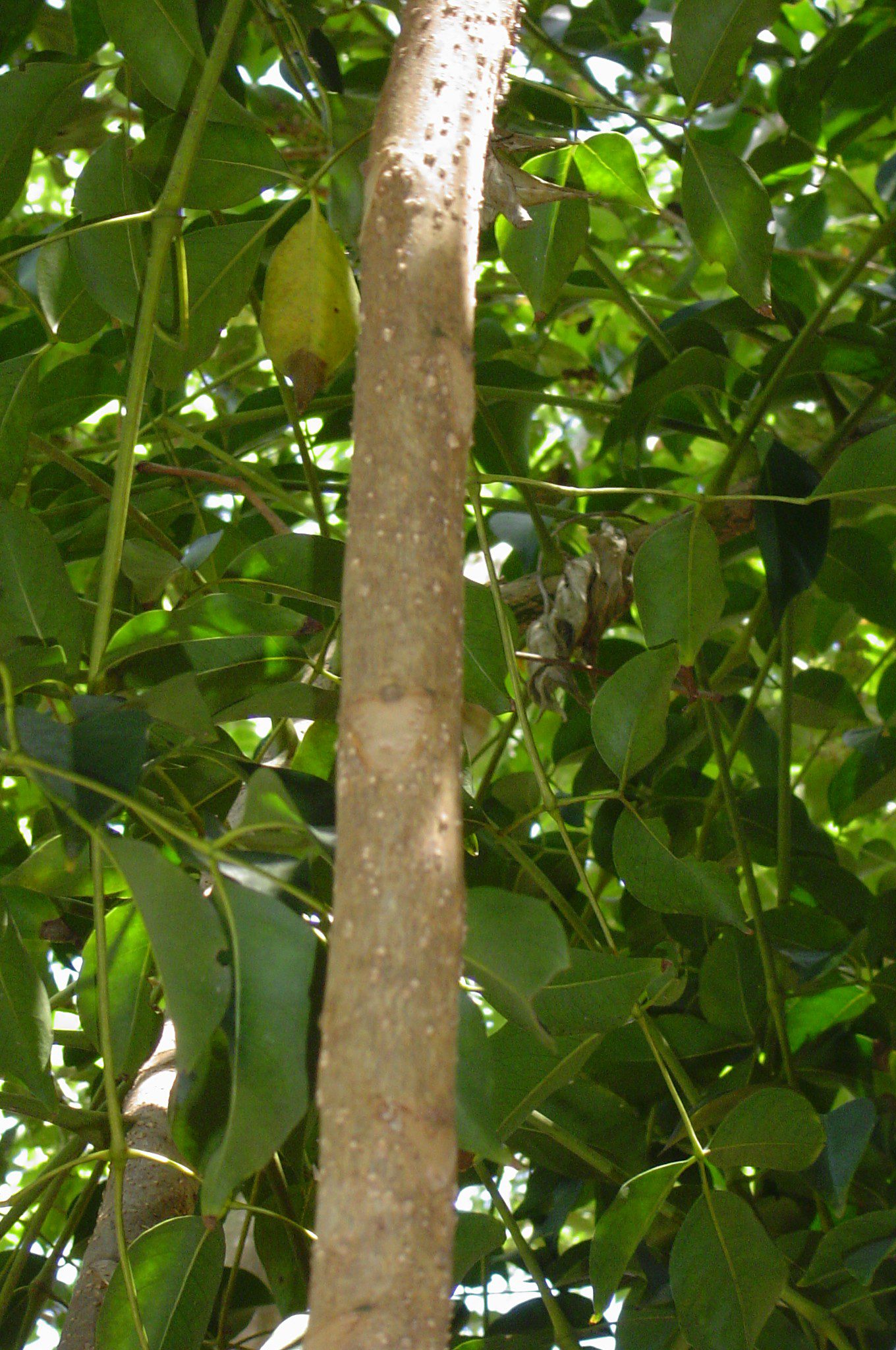Celery wood
Polycias elegans, Fam. Araliaceae

Attractive, fast growing, small to medium tree. Saplings often have an umbrella like or clumped crown. Greyish brown bark which is smooth on young trees but becomes fissured, rough, scaly and scattered with lenticels. The common name refers to the celery like fragrance and taste of the bark.
| Weed Category: | |
| Weed: | No |
| Form or habit: | Small tree, Med tree |
| Family: | Araliaceae |
| Leaf: | Alternate, bipinnate with 13 to 55 leaflets or sometimes pinnate on flowering shoots. Leaflets ovate, entire, 4-12cm long, with a drawn out point at the apex. Glossy green and hairless. Leaf axes have a swelling at each joint. Crushed leaves smell of celery. |
| Flower conspicuous: | Conspicuous |
| Flower colour: |
Purple |
| Flower description: | Large, much branched terminal panicles of very small, purple flowers. February to July. |
| Fruit conspicuous: | Conspicuous |
| Fruit colour: |
Black, Purple |
| Fruit: | |
| Fruit description: | Small, compressed globular, black to dark purple berries. Each contain two seed and have two persistent styles. May to November. |
| Habitat: | Open forest, rainforest. |
| Distribution | Queensland, New South Wales, New Guinea. |
| Food source for: | Fruit eaten by the southern cassowary, superb, rose crowned and wompoo fruit-doves, topknot pigeon, brown cuckoo-dove, emerald dove, Eungella and Lewin's honeyeaters, black faced and white bellied cuckoo-shrikes, varied triller, figbird, yellow and olive backed orioles, pied currawong, paradise and Victoria's riflebirds, green and spotted catbirds, golden, regent and satin bowerbirds and silvereye. The flowers and leaf shoots are eaten by the larvae of the dark pencilled-blue butterfly and the foliage is eaten by the larvae of the Hercules moth Coscinocera hercules. |
| Toxicity: | No toxicity known |
| Origin: | Australia, New Guinea. |
| Notes: | Early successional species. Prefers fertile soil, plenty of water and warm temperatures, but will survive harsher conditions. Readily produces basal and root suckers. Seed crop has a high proportion of infertile seed. The seed in bird droppings is preferable for sowing, otherwise sow fresh seed which has had the flesh removed. If using fresh seed, soak the fruit in water for two to three weeks, regularly changing the water, to facilitate the removal of the flesh. Can be grown from root cuttings. The timber is pale, mottled brown, soft, fine-grained and susceptible to splitting. |
| Information sources: | Melzer R. & Plumb J. (2007) Plants of Capricornia. |



